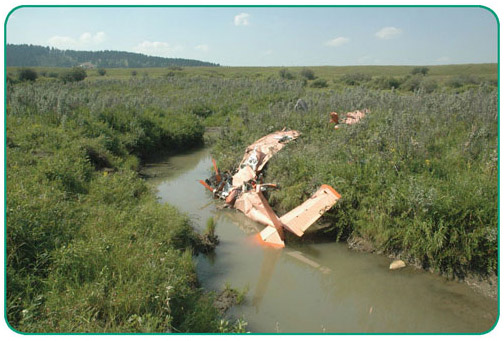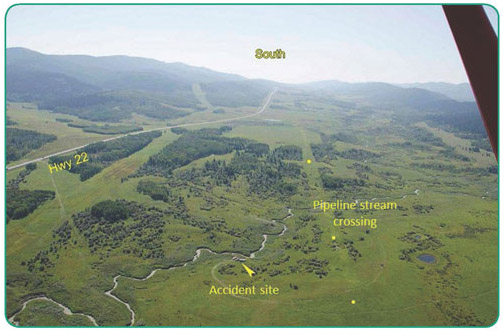Issue 02-2014 |
 
|
|
Certificate of Registration |
| by Brian Clarke, Program Manager, Operational Airworthiness, Standards Branch, Civil Aviation, Transport Canada |
|
Aircraft owners and operators go to considerable trouble and expense to ensure that their aircraft is airworthy and that their Certificate of Airworthiness remains valid. An aircraft’s Certificate of Registration sometimes needs attention too. As a service to owners and operators, the Continuing Airworthiness section of Transport Canada Civil Aviation (TCCA) sends Airworthiness Directives (AD) to the registered owner’s address as it’s recorded in the Canadian Civil Aircraft Register (CCAR) database. A percentage of each mailing comes back as undeliverable, and that’s a concern. What if the aircraft owner, who is responsible for the maintenance of the aircraft and AD compliance, never hears about an AD and doesn’t arrange for compliance with it? At best, the Certificate of Airworthiness is rendered invalid; and at worst, a tragedy happens. While an owner can perform a search for applicable AD on the Continuing Airworthiness Web Information System (CAWIS), TCCA has an obligation to send out ADs by mail so it makes sense to keep your information up to date. To change the address on your Certificate of Registration, go to our Aircraft Registration and Leasing Web Page, and under the “How Do I?” section, click on “Change My Address on My Certificate of Registration? (TP13305)”, and follow the procedure as indicated. Alternatively, you can contact your new TCCA regional office.
|
If you’ve lost your certificate, you can get a replacement. If you need to keep flying while waiting for the replacement, you can apply for a temporary certificate. (CAR 202.25—Issuance of a Certificate of Registration) If you need additional information, please contact your regional office.
|
-
Issue 02-2014 |
 
|
|
TSB Final Report Summary |
| TSB Final Report A12W0121—Loss of Control and Collision With Terrain |
|
On August 26, 2012, a Cessna 172M departed Springbank Airport (CYBW), Alta., on a VFR flight to conduct a pipeline patrol to the south, through foothill terrain. While the aircraft was circling a pipeline stream crossing on Chaffen Creek, approximately 22 NM west-northwest of Claresholm, Alta., near the Chain Lakes Reservoir, it entered a spin, descended steeply, and collided with terrain at 17:34 MDT. The pilot, who was the sole occupant of the aircraft, sustained fatal injuries. The aircraft was destroyed by impact forces, and there was no post-impact fire. The 406 MHz ELT activated on impact. The accident occurred during daylight hours. The TSBauthorized the release of this report on July 17, 2013.
Analysis There were no indications that any aircraft systems contributed to the loss of control of the aircraft and its subsequent collision with the ground. Therefore, this analysis will focus on aircraft handling and the environment in which the flight was conducted. There are no data to identify the spin characteristics of the Cessna 172 with the additional fuel tanks. Flight conditions during the stream-crossing reconnaissance and photography were conducive to stall and subsequent spin entry. These conditions would have been a relatively low airspeed/high angle of attack, steep bank angle to the left, moderate engine power and possible excessive left rudder application. The steep descent, short wreckage trail and low ground speed point to a loss of control at low altitude due to aerodynamic stall. Ground scars indicated that the spin rotation had been stopped; however, insufficient height remained to arrest the high rate of descent.
|
descent, short wreckage trail and low ground speed point to a loss of control at low altitude due to aerodynamic stall. Ground scars indicated that the spin rotation had been stopped; however, insufficient height remained to arrest the high rate of descent.
Findings as to causes and contributing factors
Findings as to risk The conduct of single‑pilot, low‑level aerial inspection flights that include additional tasks beyond flying the aircraft, such as photography, increases the risk of loss of control.
|
-

Welcome to "Are you Smarter Than A Student Pilot?" This ongoing test of your knowledge about a variety of aviation subjects is based on the Transport Canada PSTAR program, with questions designed to be used to assess a student pilot's knowledge before going solo. We will be posting a new test monthly, each on a different topic. Just for participating you will be entered into the monthly draw for a $100 Aircraft Spruce Gift Certificate. For each month you participate, you will be entered for the grand prize, a Bose Aviation Headset. Contest is VOID for residents of Quebec.
After completing the test, discover how you did...Green is for correct and Red for incorrect. Details about all the answers, right or wrong, will be provided for you. We hope that you will find this informative and fun as you discover if you "Are Smarter Than A Student Pilot"
Summaries of the answers for this test were provided by Robyn from Robyn's Flying Start. SmartPilot.ca thanks Robyn for her knowledgable and sometimes tongue-in-cheek overviews of every possible answer to each question. Simply push the ‘explanation button’ as you check your score.
Robyn is an Airline Transport licenced pilot and flight instructor. She has experience in commercial aviation, including aerial traffic watch, banner towing, float flying, and commuter airline. She also holds a Bachelor of Science degree and a Master of Information Science, and has worked as a ditch digger, chemistry research assistant, auxiliary coastguard, doughnut decorator, film promoter, and corporate librarian.































